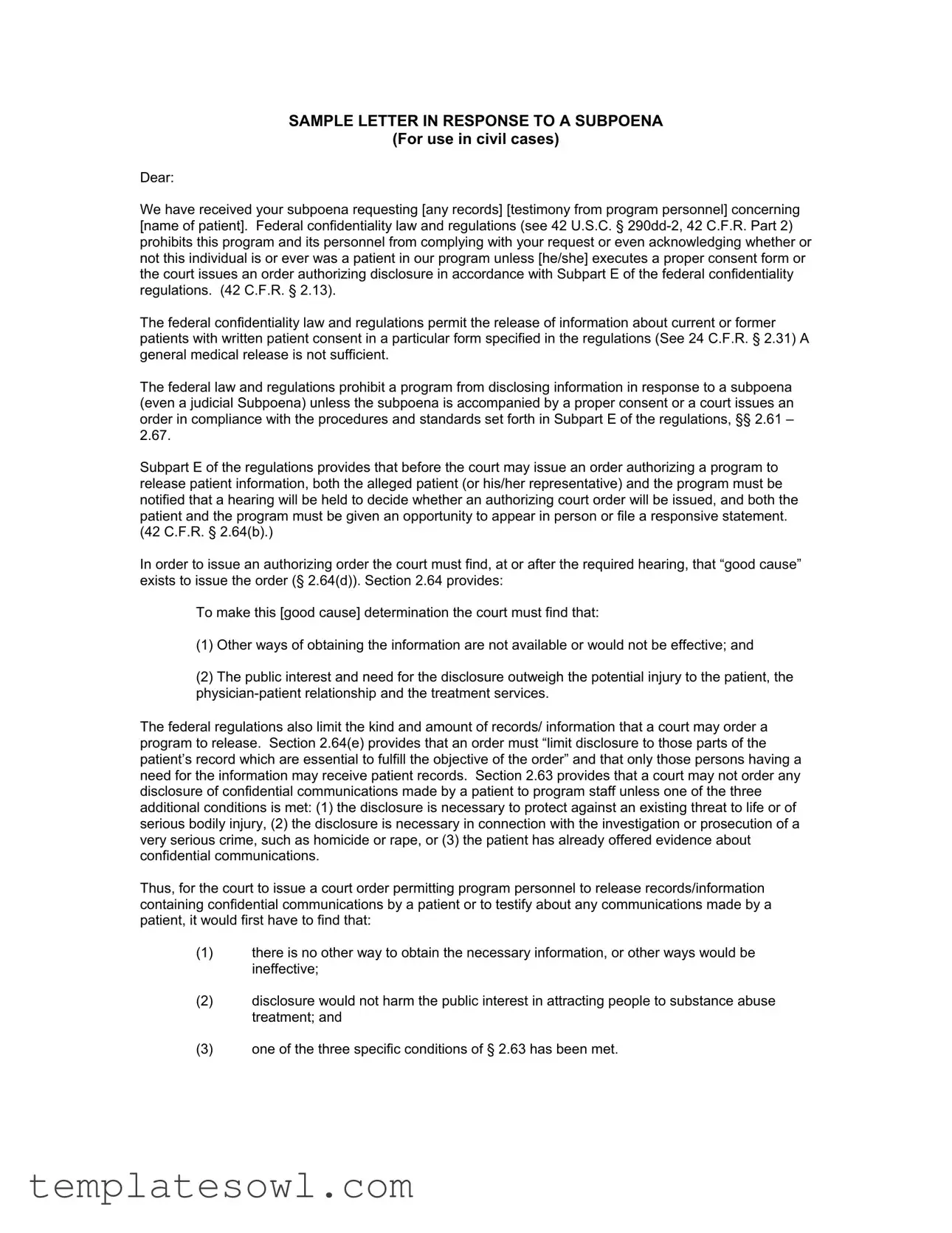What is a Response To Subpoena form?
The Response To Subpoena form is a legal document that organizations, particularly those in the healthcare and substance abuse fields, use to formally respond to a subpoena. This form informs the issuer of the subpoena about the legal restrictions that may prevent the organization from complying with the request for information or testimony.
Why is confidentiality important in these cases?
Confidentiality is critical, particularly in healthcare and substance abuse programs. Federal laws, such as 42 U.S.C. § 290dd-2, protect patients' information from unauthorized disclosure. This protection fosters trust between patients and healthcare providers, encouraging individuals to seek treatment without fear that their private information will be disclosed.
What information can be disclosed under a subpoena?
Under federal law, confidential patient information can only be disclosed if there is proper written consent from the patient or a court order obtained according to specific regulations. The order must ensure that only the essential parts of the patient’s record are released and that the need for confidentiality is balanced against the public interest.
What must happen for a court to issue an authorizing order?
The court must hold a hearing to determine if “good cause” exists for the disclosure of information. The patient or their representative, along with the program, must be notified and given the chance to appear at this hearing. The court will then assess whether the public interest in disclosure outweighs the potential harm to the patient’s well-being.
What are the conditions that must be met for disclosing confidential communications?
There are three specific conditions under which confidential communications can be disclosed: if the disclosure is necessary to prevent an immediate threat to life or serious injury, if it relates to serious crimes such as homicide or rape, or if the patient has already provided evidence concerning those communications.
What constitutes a proper written consent?
A proper written consent must meet federal regulatory requirements, which outline the specific language and format necessary for it to be considered valid. A general medical release is typically insufficient; it must explicitly grant permission for the specific records or information sought.
How does a program determine whether it can comply with a subpoena?
The program staff will review the subpoena in light of federal confidentiality laws. If there is no valid written consent or authorizing court order, the program is legally bound to refuse to release any information requested under the subpoena.
What happens if a patient does not want their information disclosed?
If a patient does not want their information disclosed, the organization is obligated to uphold their confidentiality rights. Even if a subpoena is issued, without consent or a proper court order, the organization cannot comply with the request.
How long do I have to respond to a subpoena?
Generally, you must respond within the time frame specified in the subpoena. If the subpoena is for records, it will usually indicate a deadline for compliance. If legal objections arise, those need to be addressed promptly, possibly with the assistance of legal counsel.
Does the response affect legal proceedings?
While responding to a subpoena does not directly impede legal proceedings, it is crucial for the response to align with federal laws regarding confidentiality. Failure to comply appropriately may lead to legal complications or repercussions. Always consult with legal experts to navigate these situations effectively.
